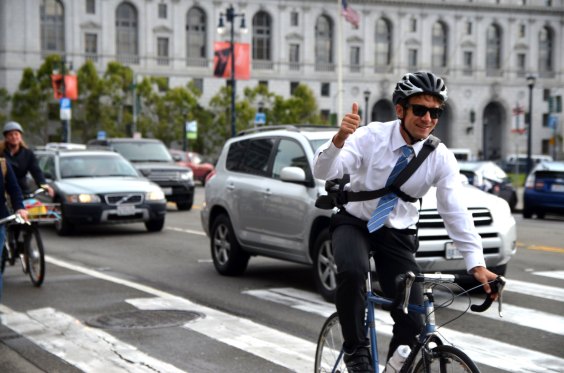The authors of a study that helped foment the public and governmental obsession with bike helmets later issued research that undermined their initial findings.

The 1989 study, by Frederick P. Rivara, Diane C. Thompson, and Robert S. Thompson, found that helmet usage reduced head injury by 85 percent, and the risk of brain injury by 89 percent.
Network blog Wash Cycle reports that other researchers were not able to replicate the results -- a red flag. And a few years later the original researchers issued a report, recently reprinted, that basically repudiated their landmark study.
These numbers have been repeated ever since by a variety of medical and insurance organizations and government agencies, despite the fact that "later efforts to replicate those results found a weaker connection between helmets and head injuries." In fact, in 2013, in response to a petition from WABA, the CDC and NHTSA agreed to remove these estimates from their website.
Thompson, Rivara and Thompson did another study in 1997 that shows no connection between helmet use and serious injury. In a review of questionnaires filled out by 3,390 cyclists injured over a three year period, they determined that "Risk for serious injury was not affected by helmet use (OR=0.9)...[and]...neck injury was not affected by helmet use." Instead they determined that:
"Prevention of serious bicycle injuries cannot be accomplished through helmet use alone, and may require separation of cyclists from motor vehicles, and delaying cycling until children are developmentally ready."
Their other conclusions (looking at just the abstract, because I don't have access to the full article) include:
- 51% of injured cyclists wore helmets at the time of crash.
- Only 22.3% of patients had head injuries and 34% had facial injuries.
- Risk of serious injury was increased by collision with a motor vehicle (duh), biking faster than >15 mph, young age (<6 years), and age >39 years.
- Risk of neck injury was increased in those struck by motor vehicles, hospitalized for any injury, and those who died.
Elsewhere on the Network today: In light of the unrest in Baltimore, City Notes compares the way black "riots" have been mythologized in the history of urban decline, compared to white violence toward blacks. Cyclelicious offers a different take on media reports about young Baltimore cyclists. And The City Fix reports Mexico City's notorious congestion is hindering economic growth.




